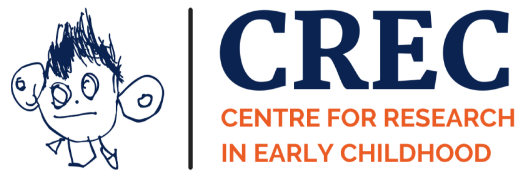Higher Order Thinking and the Smile and Laughter Response in Two-Year-Old Children
Francesca Brown-Cornwall
Twitter: @FrankieCornwall
Isn’t the sound of children’s laughter one of the most beautifully heart warming things we can hear? I remember walking through the corridor between the two-year-old unit and the pre-school classroom, and the backdrop of laughter made me so confident as a Training and Quality Manager that, as a team, we were certainly getting something very right. Laughter truly is the music of the soul.
This confirmed to me that my MA Education research project was going to probe this under-researched area of practice just a little more. Fast forward nearly ten years, and I’m knee deep in the PhD into Higher Order Thinking and the Smile and Laughter Response in Two-Year-Old children. I have now hit seven years working full time in academia, and that corridor walk still sits with me fondly, it remains a happy place.
I am a hybrid Psychology and Education researcher, and my fascination of smiles and laughter means I am passionate about supporting a skilled, innovative and joyful workforce in early childhood and educational services.
At the upcoming conference, I will be sharing the findings from the first of my four studies into the topic of Higher Order Thinking and the Smile and Laughter Response in Two-Year-Old Children. This study aimed to ascertain adult perspectives on what activities elicit higher order thinking and smiles and laughter in two-year-old children. Identifying ways that we can do our bit to provoke Higher Order Thinking and pleasure simultaneously for positive developmental progress in two-year-old children is arguably key following the COVID-19 lockdowns, whereby human connectedness and subsequent social, emotional and cognitive learning experiences have been reduced. Sixty adults who spend regular time with two-year-olds in professional and/or personal capacities completed an online questionnaire consisting of twenty-two open ended questions. I’ll share insight pertaining to the following themes generated from these responses - Providing Playfulness, Deliberately Developing Humour, Harnessing Individuality, Appreciating the Relationship between Mind, Body and Emotion, Sharing in the Benefits.
In the first year of life rapid neural connections are formed followed by the second year of life where a period of equally rapid proliferation and pruning occurs (Fox et al. 2010), the brain circuits become more efficient, and the highest cognitive functioning happens (Boyd & Bee 2019, Knudsen 2004). This period is arguably opportunistic for adults to provide pleasurable and stimulating experiences to have maximum positive impact on a child’s development (Gee, 2020). This is not without mutual benefit as the work of Mizugaki et al. (2015) highlighted that when mothers are exposed to their child’s smiles and laughter, their stress levels reduce, thus there is scope for adults and children alike to capitalise on this powerful social tool. Therefore, this study identified what activities and approaches can be adopted to make the most of this opportunity.
Smiles and laughter are often the earliest established, rehearsed and arguably readily available cue two-year-olds have to convey and influence their thinking, learning and socialising opportunities (Addyman 2018, Boyd & Bee 2019, Knudsen 2004) they’re a fantastic option in our toolkit to facilitate development.
If you’re privileged to be close to two-year-old children, why not try these three ‘tickle pins’ with two-year-old children you’re close to, to celebrate complex thinking and concurrent smiles and laughter:
• Physical comedy – tickle time is an easy win, you could play ‘tickle tag’ where the person who is ‘on’ must tickle their friends to catch them.
• Incongruous items – a firm favourite of one of my teams (and children) has been the banana from the role-play kitchen, because this becomes the Banana Phone! The silly conversations that can occur on the banana phone are endless. Other incorrect and silly connections can be made, for example, playing with animals and making incorrect sounds.
• Silly words – making up silly sounds and words can be great for pre-literacy/phonics because it exercises the mouth (so too does the smiling and laughter that follow). Perhaps try singing along to a familiar nursery rhyme tune using jazzy scat lingo ‘zoobity doobety scadilly daaa…’
Hopefully we can smile and laugh together at the conference as we explore this fascinating area together.
References
Addyman, C, Fogelquist, C, Levakova, L, Rees, S, (2018) Social facilitation of laughter and smiles in preschool children, Frontiers in Psychology, 9, 1048, doi: 10.3389/fpsyg.2018.01048.
Boyd, D & Bee, H, (2019) Lifespan Development, EBook, Global Edition. Harlow: Pearson Education, Limited.
Fox, L, Levitt, P, Nelson, C, (2010) Hot the timing and quality of early experiences influence the development of brain architecture, Child Development, 81, 1, 28-40, doi.org/10.1111/j.1467-8624.2009.01380.x
Gee, D, (2020) Caregiving influences on emotional learning and regulation: Applying a sensitive period model, Current Opinion in Behavioural Sciences, 36, pp177-184, doi:10.1016/j.cobeha.2020.11.003
Knudsen, E, (2004) Sensitive periods in the development of the brain, CognNeruosci, 16, pp1412-25, doi: 10.1162/0898929042304796.
Mizugaki S, Maehara Y, Okanoya K, Myowa-Yamakoshi M. The Power of an Infant's Smile: Maternal Physiological Responses to Infant Emotional Expressions, doi: 10.1371/journal.pone.0129672.
